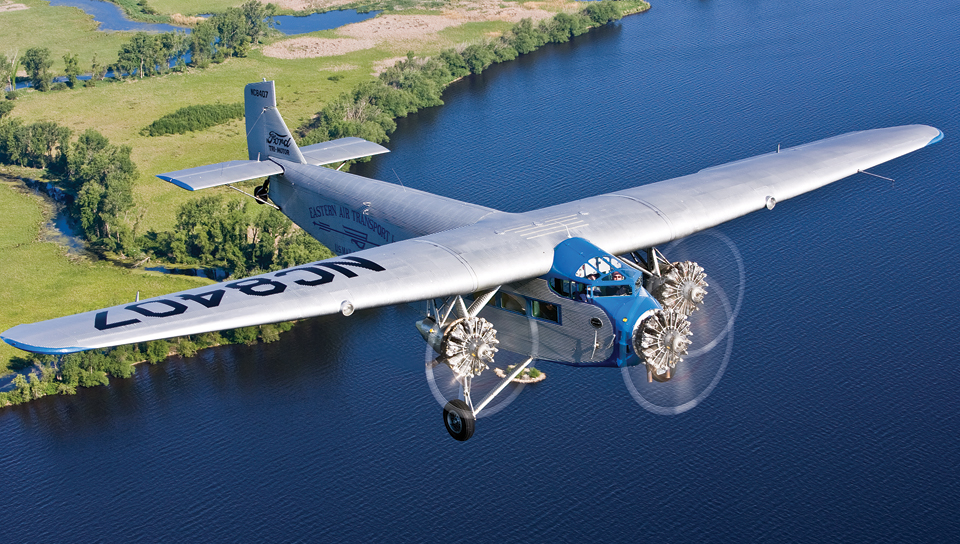EAA’s Ford Tri-Motor Flying After Major Overhaul
By Megan Esau
July 23, 2016 - EAA’s Ford Tri-Motor returns to service for AirVenture Oshkosh 2016 refurbished and improved after undergoing a major overhaul by Weeks Hangar staff since being taken out of service last August.
The overhaul, led by manager of aircraft maintenance John Hopkins, was completed over a span of nine months, wrapping up in late April this year.
“The airplane was telling us it was time,” Hopkins said. “I was seeing things that were starting to concern me. Joints were getting a little bit looser each time we went out to visit the airplane.”
NC8407 came to EAA after it was severely damaged by a windstorm in Burlington, Wisconsin, in 1973, and EAA Founder Paul Poberezny made a bid to purchase its remains. Winds had torn the Tri-Motor from its tiedowns, lifted it 20 feet in the air, and flipped it on its back, snapping the fuselage in half.
After undergoing a complete restoration, NC8407 has been giving rides with EAA for nearly 30 years.
Nearly 19,000 miles of flying cross-country every year, though, was beginning to take a toll on the 87-year-old Tri-Motor.
“Through all the years of improvements on the airplane and amenities being added…the airplane got heavier and heavier and heavier, and we got to the point where we could no longer carry the ninth passenger in the back of the airplane and have enough gas on the airplane to make it safe,” Hopkins said.
The airplane was disassembled until it was nothing more than a fuselage resting on a set of dollies, and then, Hopkins said, his team began evaluating where small changes could be made to reduce the Tri-Motor’s weight.
He said among the changes made were a switch from five-ply to four-ply laminate flooring, the replacement of an old steel generator with a Jasco alternator, and removing the carbon pile voltage regulator and reverse current relay to install a solid state unit. All in all, the Tri-Motor is 300 pounds lighter than it was a year ago.
“So now we’ll get our passenger back,” Hopkins said. “Plus, we can carry a little bit more fuel so it’s a safer operation and they can fly a little bit longer without having to worry about gas.”
The left wing also underwent major repairs after a crack was found on one of the aileron attach fittings and corrosion was discovered in one of the spars. In addition, the entire instrument panel was updated.
Cody Welch, chairman of EAA’s Ford Tri-Motor Tour program and volunteer captain, said the overhaul allowed EAA to check off all of the mechanical updates on its wish list.
“Functionally, the airplane is much more utilitarian than it was,” Welch said. “Certain things you can see into the modern day of flying. Now we have an airplane that really fits well in our modern traffic system.”
Those wishing to get a taste of what flying was like in the golden age of aviation can catch a ride on EAA’s Tri-Motor at the southeast corner of the Warbirds ramp, adjacent to taxiway P-1. Tickets are $75 per passenger.
“This airplane is infectious,” Welch said. “You can time-travel with a Ford Tri-Motor. When you take off you’re in 1929.”
Also back at AirVenture this year is another tri-motor, the 1928 Liberty Ford 5-AT-B.

